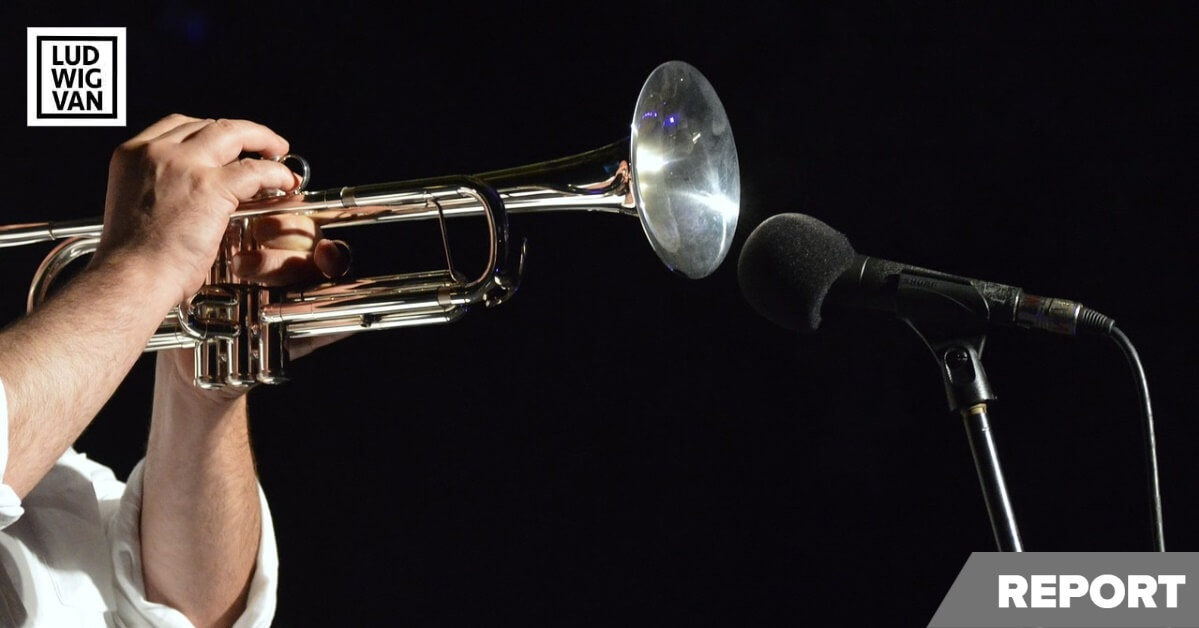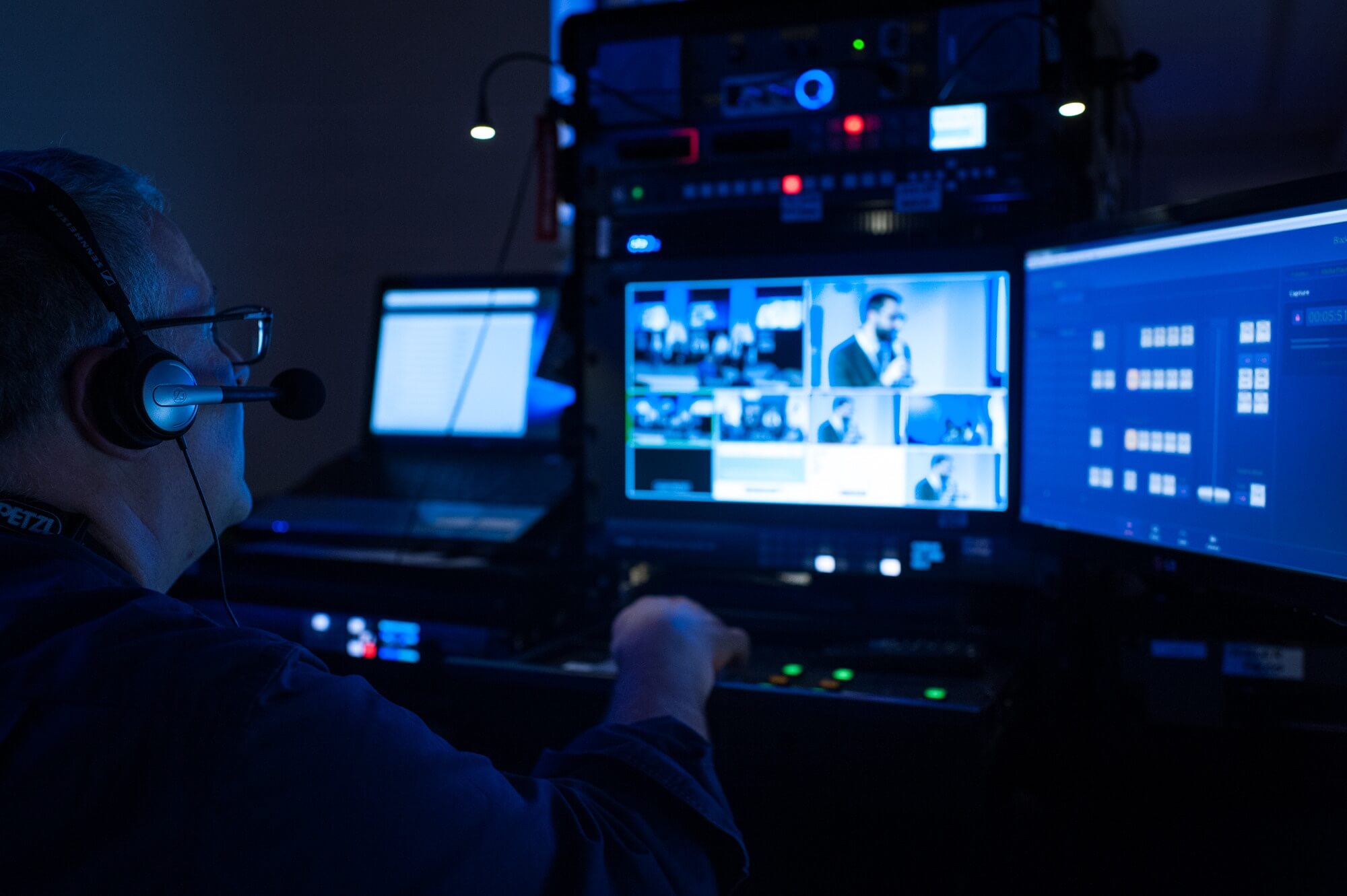
The COVID-19 pandemic has had some unexpected consequences, one of them being the sudden growth of live streaming as a way to connect performers and audiences during the period of physical distancing.
All musicians, dancers, theatre artists and other performers long for the return of the days of live audiences, but even when the lockdown ends, it seems unlikely that live streaming will vanish along with our N95 face masks. It’s a relatively inexpensive way for musicians to keep in touch with fans, and the intimate atmosphere has proven popular with many audiences.
If live streaming is here to stay, however, there are still some technical hurdles to be overcome. When it comes to live music streaming, and in particular, the capacity to play together real time over the internet, the technology could be said to be in a nascent state — still very much under construction.
In looking for ways to improve the live streaming experience both for audiences and performers, there are many angles to tackle. Privacy and security is an issue, particularly when it comes to piracy and protecting copyright. Other issues are more particular to the performing arts sector.
Playing Together Apart
Latency is the biggest issue to be overcome when it comes to playing with other musicians remotely. It’s not just anecdotal. Reports commissioned by Wowza and Bitmovin, major streaming companies, indicate that the majority of users cite latency as the major hurdle in live streaming.
Latency is essentially the amount of time it takes for the digitized audio of a performance to zap through the ethernet, and the actual live broadcast of that sound. Think of it as a lag time. Simply put, information takes a minimum of 5 microseconds per km to transmit over the internet. Along the way, that signal may also have to be rerouted or switched, and may travel over different types of networks that may impede the speed.
A certain amount of latency is tolerable to the human ear — about 0.2 seconds for conversations. When it reaches more than 1 second, it hinders communication. Naturally, musicians need to be able to hear each other to play together. Dedicated jamming platforms like Jammr, NINJAM, Jamulus, eJamming, and JamKazam, are generally usable if musicians are located within the same city or general area.
Latency also creates other issues, such as problems with background noise and echo cancellation.
Low Latency Streaming Solutions

What is called “low latency” live streaming has been a hot topic in the tech industry for a few years now. A plethora of new companies are now raising capital for research, many of them region specific, like Kumu Holdings Pte. Ltd., the company that owns the technology behind Philippine live streaming app Kumu. Kumu subscribers can play online game shows, participate in contests and other activities, as well as become live streamers.
One possible solution, developed by researchers from Adobe Systems, among others, uses what is called a “server push“.
The viewer’s computer sends a request to the streamer, and the information is handled in packets or segments. Requests go out and segments are sent back until the broadcast stops, or the viewer turns it off. Largely because of video streaming, those packets or segments have already been reduced from about 10 seconds to six seconds over the last few years. What the server push does, in essence, is automatically push the video out to broadcast the moment it is available, rather than wait for a larger segment.
Adaptive bitrate technologies, or ABR, have been under development for about a decade. They enable broadcasters to adapt the stream to a user’s specific bandwidth, optimizing the audience experience.
Some communications applications such as Hangouts and Google Meet use what is called WebRTC or Web Real-Time Communication, which results in low latency. WebRTC is an open source project that dates back to about 2010. Instead of transmitting packets of information, it pushes all the information through at once, along with a buffer called Forward Error Correction (FEC). FEC is like sending extra data to the destination. If the original data is corrupted, it can be rebuilt with those extra bits at the destination.
These applications, however, are sensitive to disruptions due to low bandwidth or other WiFi fluctuations, which are very common with home WiFi and mobile devices. WebRTC programs may also expose the user’s real IP address to all and sundry.

Audio Vs. Visual
There are plenty of paid streaming solutions such as Zoom, IBM Cloud Video, Vimeo Enterprise, and Brightcove that cater to business clients and facilitating video-conferencing. Before the pandemic, the biggest push to solve the latency problem has come from more visually oriented fields such as sports gaming and video game streaming.
In live sports gaming, even a short delay can be crucial. With live broadcast delays of up to a minute or more, someone betting online with a friend who is at the game could easily take advantage of any last second changes in the score. It’s one reason there have been increased security looking for fans using their phones too much towards the end of a match in the English Premier League.
Visual quality of the video feed is sometimes sacrificed to sound quality. Like audio data, video is sent in segments, and programs will store a certain number of video segments before beginning to play (often three) called a buffer. The buffer makes allowances for fluctuations in the WiFi or signal, or other disruptions. It allows the video to play smoothly, in other words. Reducing latency typically also reduces the amount of available buffering when it comes to video playback.
While the technology is still being explored, there are some current low latency proprietary solutions, with a new wave of cloud based streaming options such as Limelight Video Acceleration and Wowza Streaming Cloud with Ultra Low Latency.
Phenix Arts, a US company, offers sub-second latency specialized for sports gaming. The company sells what they call cloud based real-time streaming with latency less than 0.5 seconds, synching the content across multiple devices so all viewers see the same thing at the same time. Their approach involves a multi-cloud platform and a private fibre network. The Chicago company recently raised more than $7.5 million USD for further research into low latency streaming.
When it comes to internet platforms, industry insiders expect the next big wave to come from platforms other than Facebook or Instagram, where any live stream is buried in a rapidly changing newsfeed. Twitch has been at the forefront of using low latency tech as well as video game streaming.
Twitch, while most commonly associated with video game streaming, is becoming more and more relevant to the music industry. While streaming, performers can chat (by voice or text) live in real-time with viewers, with revenues coming from subscriptions to their channel, along with the ability to make online tips during the performance.
Since its root are in video gaming, it’s no surprise that Twitch is a favourite for electronic music artists and DJs. The first live concert broadcast on Twitch took place back in August 2014, featuring American DJ Steve Aoki. With so many contemporary composers using at least some electronic elements in their music, it seems like a potential platform for collaboration and connecting with non-traditional classical music audiences.
The upcoming 5G rollout should improve latency issues overall, and artificial intelligence, or AI, may also provide solutions to the video quality problem.
The Future Is Streaming

North America lags behind places like China when it comes to tapping into what is reported to be a $5 billion live streaming industry, but the pandemic is likely to change all that. Even before the coronavirus, though, live music streaming was on the rise.
Live video viewing grew by 93% year over year, with an average viewing time of 26.4 minutes per session, according to Conviva, a research company, representing Q2 2019 data specialized for TV. That’s 25% more time than those same audience members spend viewing on-demand video. The Conviva report also noted improvements in streaming speeds of over 25 percent.
Streaming media has rocketed upwards of 20% over the first three weeks of March 2020, with over 25 percent increases noted in North America. The Conviva data comes from analyzing 1.5 trillion real-time transactions representing 500 million viewers in more than 180 countries.
Research shows that live streaming doesn’t take away from live performance attendance. People who live stream a concert are actually 67% more likely to buy a ticket to a similar performance in the future.
Other data is equally encouraging.
-
45% of the audience for a live stream would pay for live or on-demand video from their favourite performer or sports team.
-
87% of the respondents said they would even prefer to watch online if there was exclusive behind-the-scenes content.
Live streaming can offer viewers peripheral content like contests or virtual games that run simultaneously to the live broadcast. In one Twitch live stream, for example, there was a karaoke contest that viewers could participate in, with the winner announced before the stream was over. Another bonus is allowing audience members to choose wherever they want to sit, including right up on stage with the musicians.
Offering audience the choice of live or online experiences seems to be an ideal way of enlarging a performer’s reach. In 2019, for example, the Coachella festival was live streamed for both weekends, involving three stages and more than 60 performers, with viewership of over 9 million. That growth can be exponential. The Pickathon music festival in Oregon, a smallish festival of independent music, increased their online audience from 11,000 in 2015 to a whopping 200,000 in 2016.
Classical musicians and their audiences have embraced live streaming during the lockdown, and its potential to increase audiences that new technology will only add to is one of the bright spots emerging from the COVID-19 pandemic.
#LUDWIGVAN
Want more updates on classical music and opera news and reviews? Follow us on Facebook, Instagram or Twitter for all the latest.
- PREVIEW | Kindred Spirits Orchestra Offers Sounds Of The Season With A Twist - November 26, 2025
- FEATURE | Learn Musical Comedy Improv Skills With Classes Led By Award-Winning Director/Writer/Actor Carly Heffernan - November 26, 2025
- PREVIEW | The Upper Canada Choristers & Cantemos Celebrate The Holidays In English, Spanish, French & Latin - November 26, 2025



